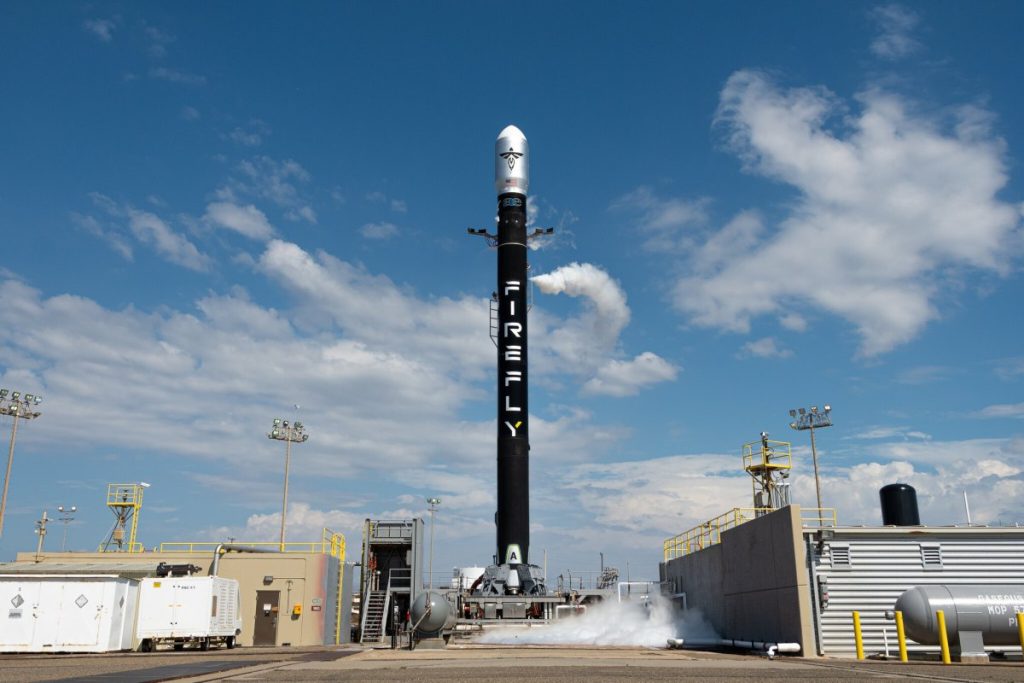WASHINGTON — Firefly Aerospace has raised $175 million in a round led by a new investor to support production of launch vehicles and spacecraft with an increased focus on responsive space capabilities.
The company announced Nov. 12 it raised what it described as an oversubscribed Series D round led by RPM Ventures. Several other existing and new ventures also participated in the round, which values Firefly at more than $2 billion.
That valuation is an increase from the $1.5 billion the company reported in November 2023 when it closed the final tranche of a Series C round. The company did not disclose the size of that earlier round but said then it had raised about $300 million since February 2023.
The company said the funding will go towards moving to increasing production of its Alpha launch vehicle and to “expand market reach” of the Elytra spacecraft. The funding will also accelerate hardware qualification for new vehicles in development, Firefly stated.
The company has increasingly positioned itself as a provider of responsive space capabilities. It demonstrated that capability with the Alpha launch of the Space Force’s Victus Nox mission in September 2023, launching a spacecraft on a 24-hour callup. It has used a similar rapid callup on subsequent launches.
“This successful financing round solidifies Firefly as the undisputed leader in responsive space,” Kirk Konert, chairman of the board of Firefly, said in a statement.
The focus on responsive space was a factor for new lead investor RPM Ventures. “Few companies can say they’ve defined a new category in their industry – Firefly is one of those,” said Marc Weiser, managing director at RPM Ventures, in a statement. “They have captured their niche in the market as a full-service provider for responsive space missions and have become the pinnacle of what a modern space and defense technology company looks like.”
RPM Ventures has not invested in space companies before firefly, focusing on other industries, from automotive to software. However, Weiser served for several years on the NASA Advisory Council’s science committee.
Firefly has, in recent months, lined up launch contracts from government and industry. That includes a multi-launch deal with Lockheed Martin in June for at least 15 and potentially as many as 25 Alpha launches and a contract with L3Harris in August for up to 20 Alpha launches over five years. NASA awarded Firefly a contract in September for the Alpha launch of NOAA’s QuickSounder spacecraft.
Those contracts have far outpaced actual launch activity. Firefly has conducted only one Alpha launch so far this year, a mission in July for NASA that deployed eight cubesats. At the time the company said it was planning as many as four launches in 2024 but has not set a date for its next launch.
Firefly has also been gearing up for the first flight of its Blue Ghost lunar lander for NASA’s Commercial Lunar Payload Services program. At an Oct. 29 meeting of the Lunar Exploration Analysis Group, Joseph Marlin, chief engineer of Firefly’s Elytra Dark spacecraft, said the lander had completed environmental testing and was back at the company’s headquarters for final preparations.
Firefly previously stated the lander is scheduled to launch in the fourth quarter but Marlin said he could not provide a more specific launch date, citing uncertainties in the launch manifest for SpaceX, whose Falcon 9 will launch Blue Ghost.
The company also saw upheaval in its leadership, with Bill Weber stepping down as chief executive in July after reports the company was investigating an alleged inappropriate relationship. Firefly hired Jason Kim, the former chief executive of Millennium Space Systems, as its new chief executive in August. Kim had worked with Firefly on the Victus Nox mission, with Millennium building the spacecraft that Firefly launched.
“Firefly is extremely grateful for our existing and new investors whose support demonstrates a huge vote of confidence in our capabilities and future,” Kim said in a statement. “I believe this is what has defined us in the market and continues to drive the investor demand that allowed us to move from term sheet to close in just two months.”

